Description
Mercedes Benz G-Class Hardcover book (fragment of the text)
This outstanding car practically has no name – just “off-road vehicle”: this is how the word Geländewagen is translated from German. In the 1970s, it was conceived as a simple and utilitarian car, like agricultural machinery: modest, strong, capable of overcoming obstacles and transporting people and goods in any weather, on any roads, as well as off-road.
In the 1980s, red, green, white, and angular little cars in other colors drove through fi elds and forests, conquered mountains, and even served in the army. More precisely, in the armies of different countries, which only confi rms this model’s outstanding technical qualities.
But by the beginning of the 1990s, the second generation’s time had come. And literally from the rural mud, the Geländewagen, which had changed its image, moved to the capital’s streets. It could still ford a river or rush through a snow-covered fi eld without getting stuck, but usually it was not bought for this and was appreciated for something completely different.
Its appearance did not change much: the second Geländewagen remained the same “straightforward”, with completely fl at windows and doors on the outer body, like a gate on hinges… But, at the same time, it began to attract attention with its brutality and the obviously high cost. Its predecessor did not have any of these features at all: the designers did an excellent job with their task, if that was indeed their task…
It is not surprising that the car was especially liked by wealthy and “authoritative” businessmen from the post-Soviet space. Bad roads and the desire (need) to be terrifying in a terrifying world left them no other choice.
The “New Russians” either drove Geländewagen themselves, or they preferred the Mercedes S-class but accompanied by a Geländewagen – with security behind the wheel.
A black Mercedes 600 racing along the left lane or even in the oncoming lane, and behind it a black “cube” – this is a “genre classic”, a sign of Russia at that time.
If direct competitors – the popular and superreliable Toyota Land Cruiser and the aristocratic Land Rover Discovery and Range Rover – constantly changed their appearance (today their design is very different from the original), the Geländewagen has visually changed relatively little since 1979.
And for 28 years (the second generation was produced from 1990 to 2018), by and large, it did not change at all. Isn’t this evidence of an initially very well thought-out form? Perhaps only the VW Beetle, an indisputable classic, could boast of such a successful silhouette that did not require changes for decades.
Both of these cars will certainly adorn the collections of industrial design museums as classic examples of the 20th century automobile industry.
Such constancy only plays into the hands of the owners of middle-aged Geländewagens, because their favorite car differs little from the almost new “cubes” produced before 2018, and it does not depreciate in value over the years.
And frankly, the “ancient” Geländewagen continues to perform its “representative” function today. If you think about it, it’s not surprising that many wealthy people preferred the Geländewagen (kind of like a carriage) to limousines, but it is surprising that they preferred it… to sports cars.
With the release of AMG versions, this SUV, which does not know the word “aerodynamics”, almost became a racing car that also began to enjoy considerable demand.
Eccentric and wealthy buyers liked the no less unusual 6-axle Geländewagen, which was expensive, like Rolls-Royce and Londola: versions with the “retro” body that everyone had already forgotten, with a closed front and an open rear (probably so the summer rain could only be enjoyed by wealthy passengers drinking champagne from Mercedes-branded silver fl utes, not their hired driver).
Who knows, perhaps this is what the G-Class is loved for – the “denial” of evolution, for the fact that it challenges time, without ageing and remaining the only (after the Land Rover Defender was retired) unchanged car in a faster and faster сhanging world.
Read the continuation of Mercedes Benz G-Class story in the book.
Other books about history of Mercedes:

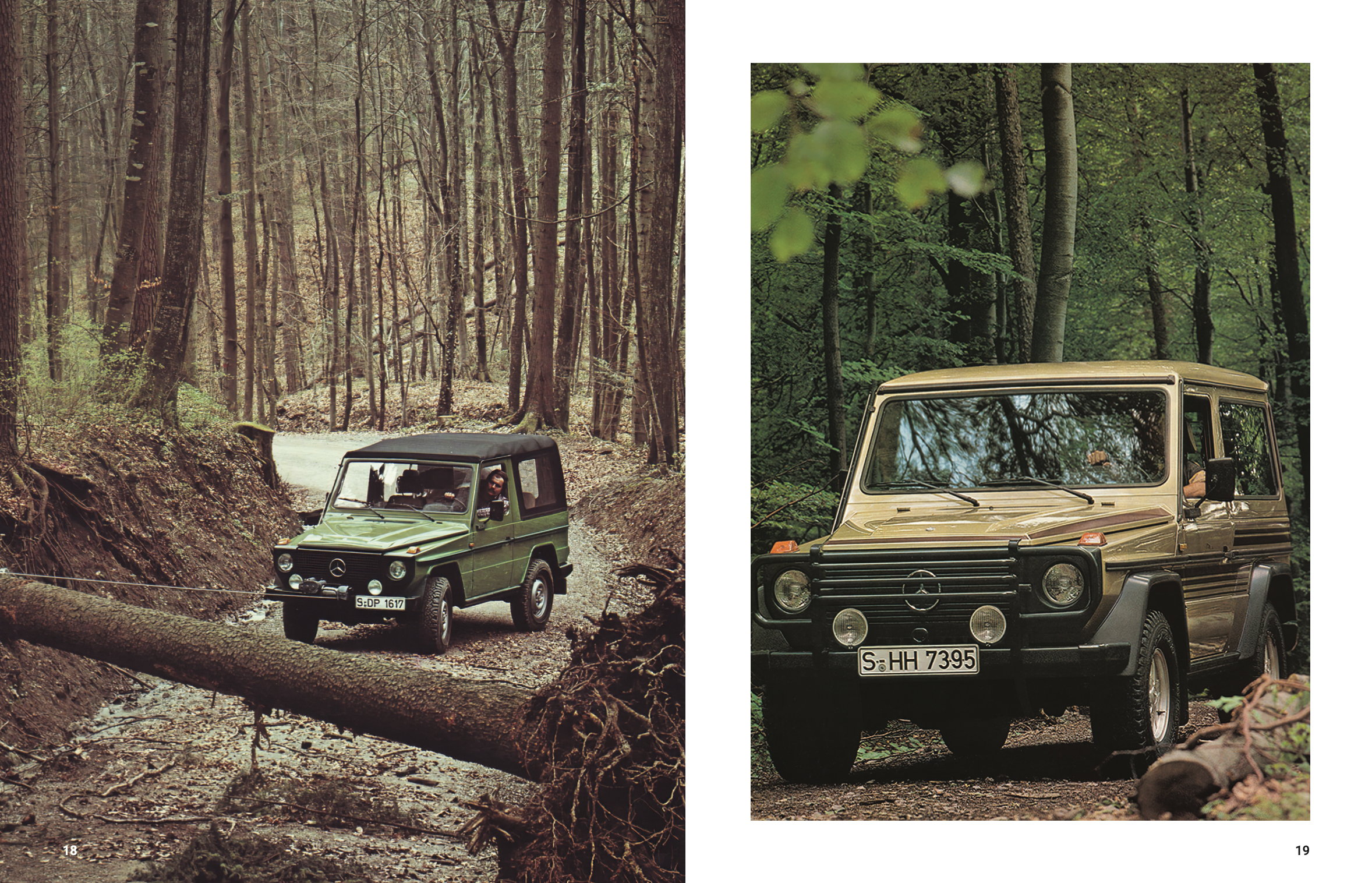
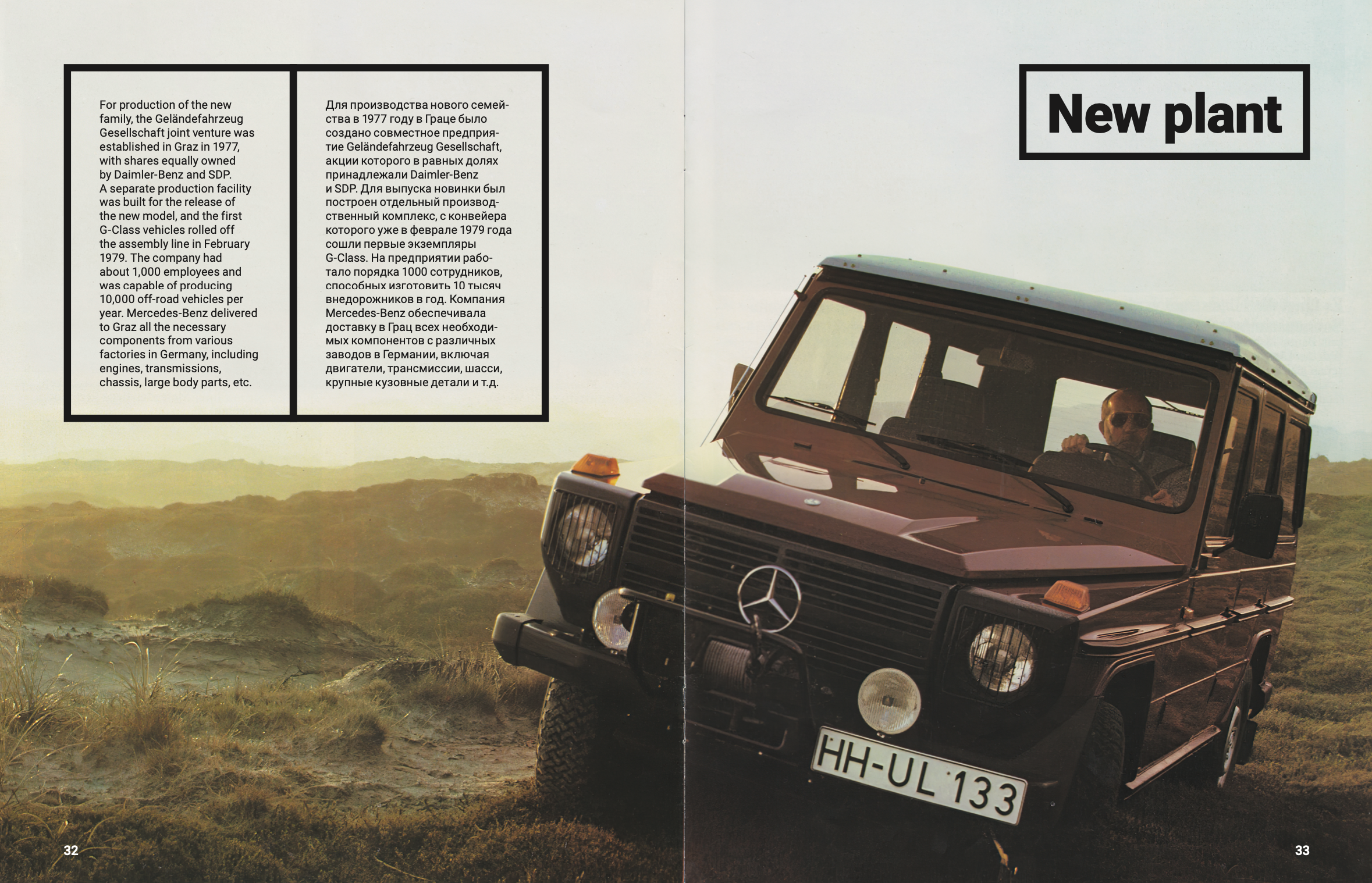
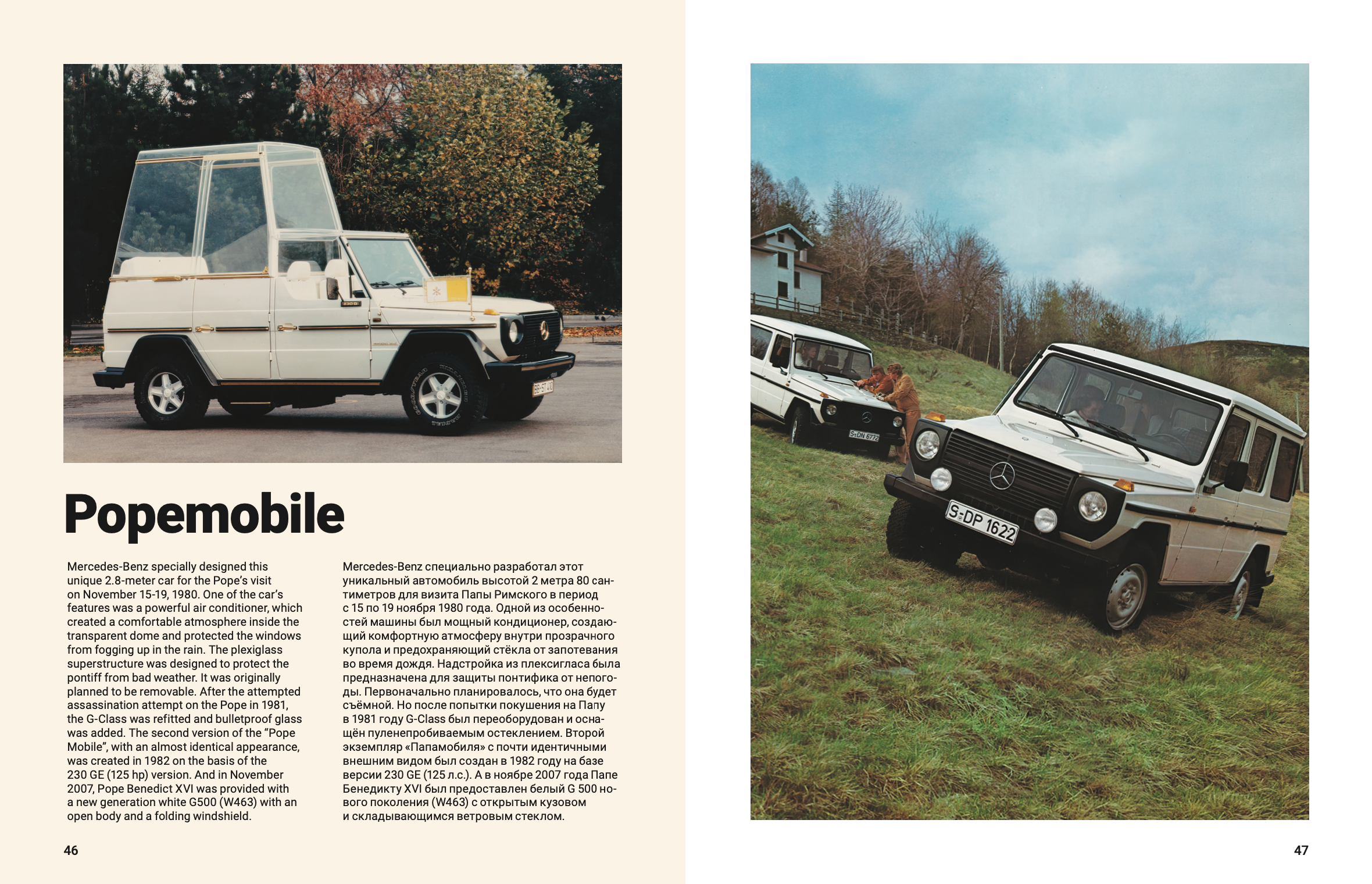
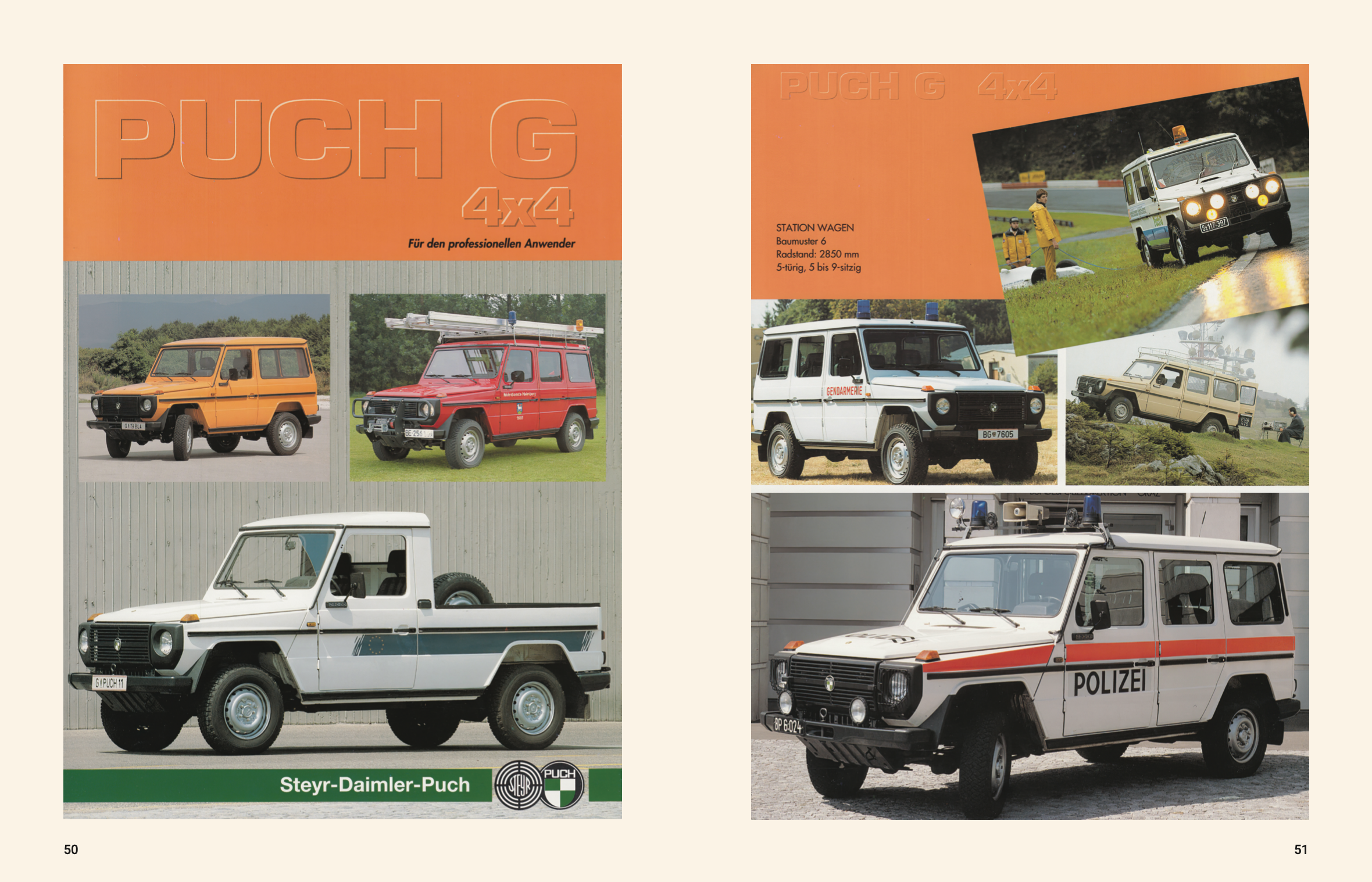
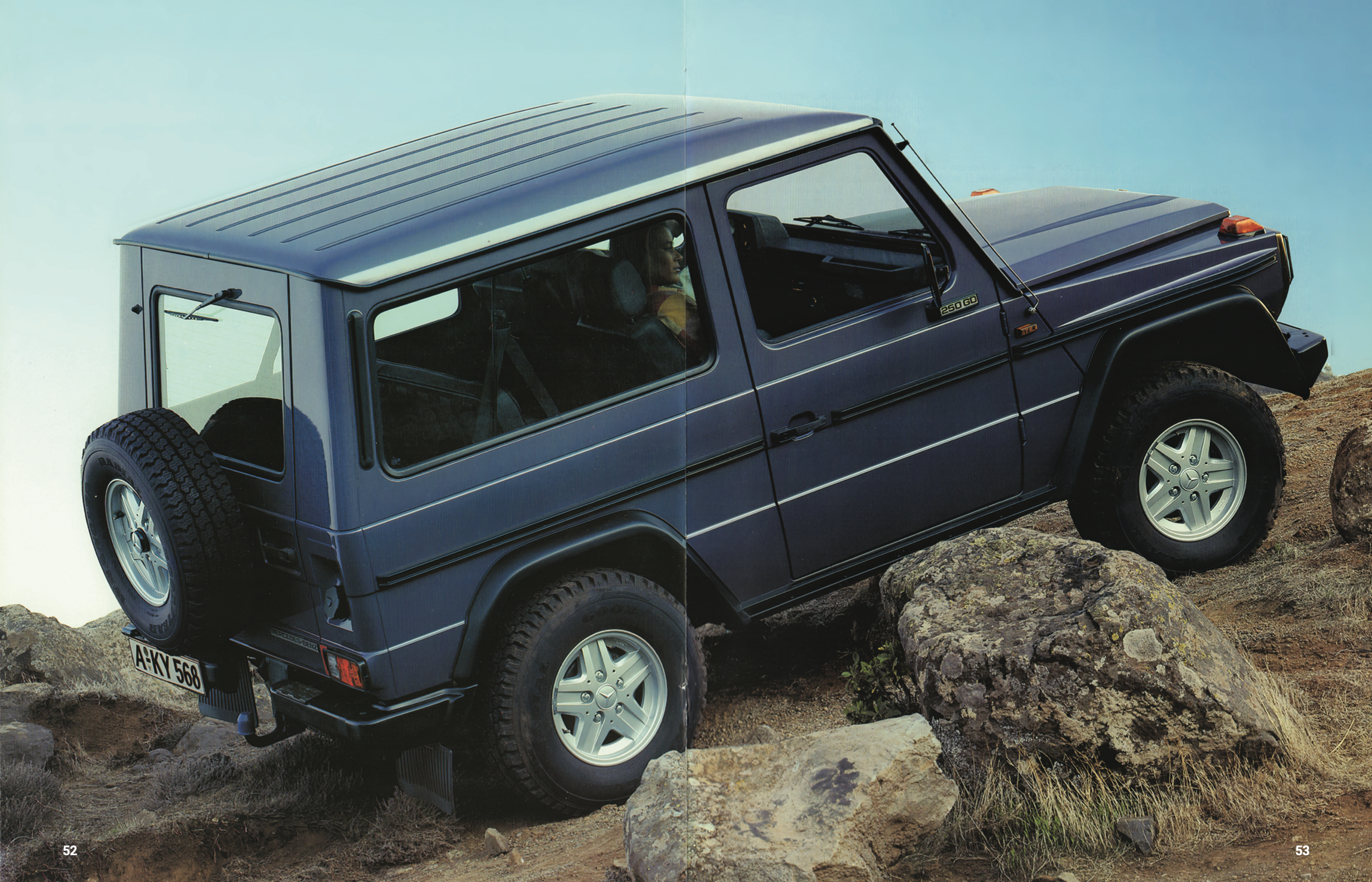
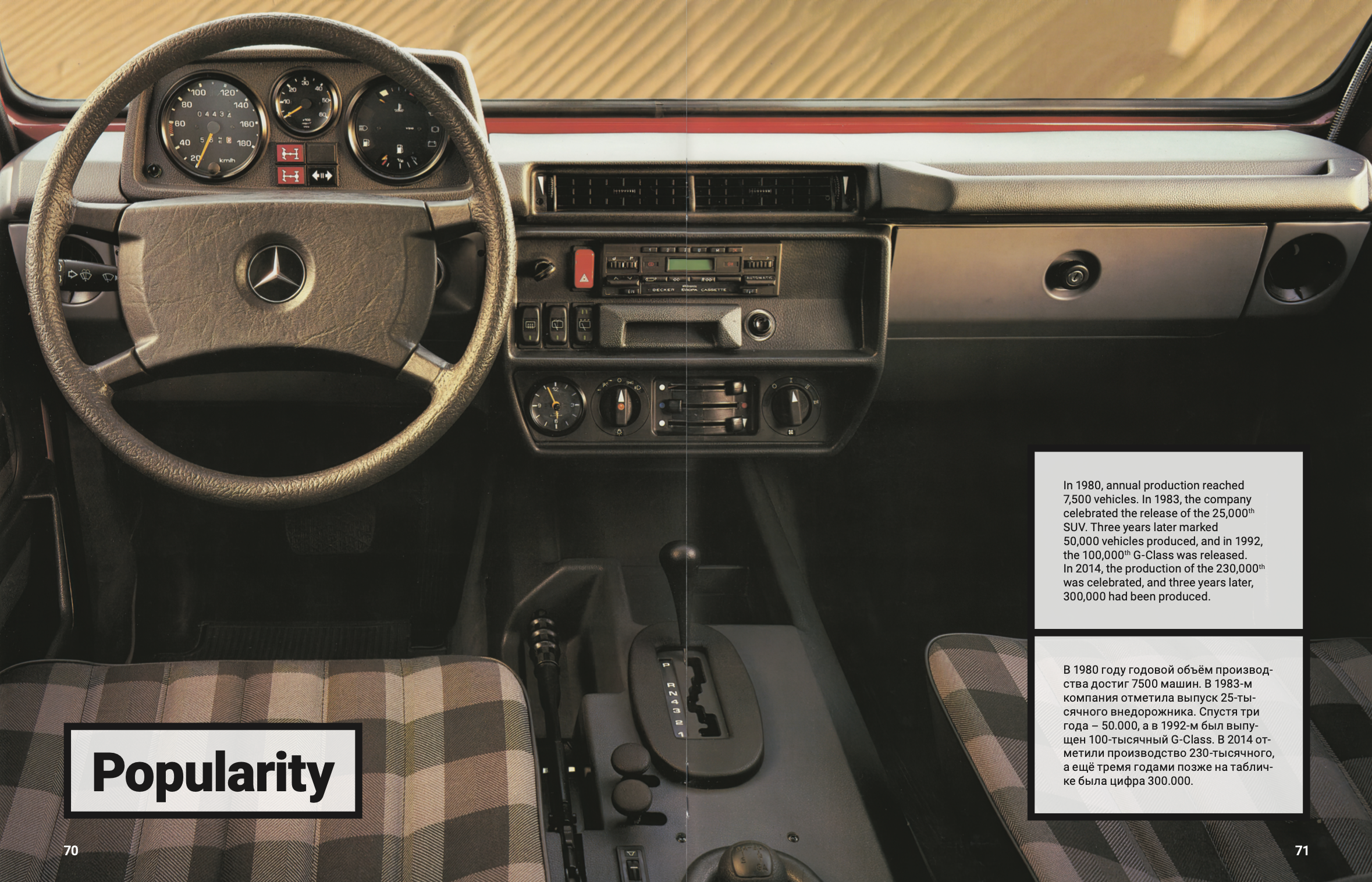
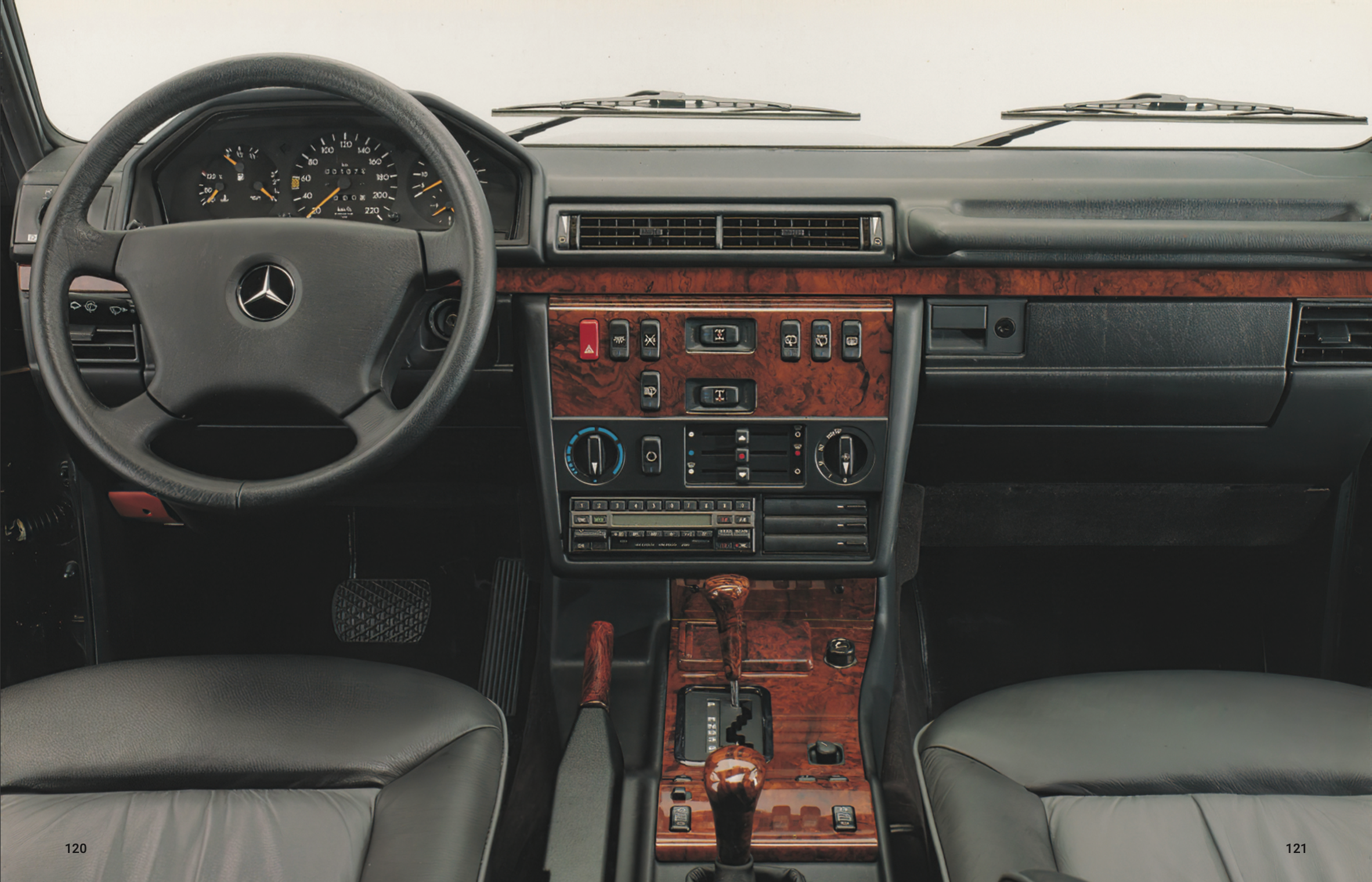
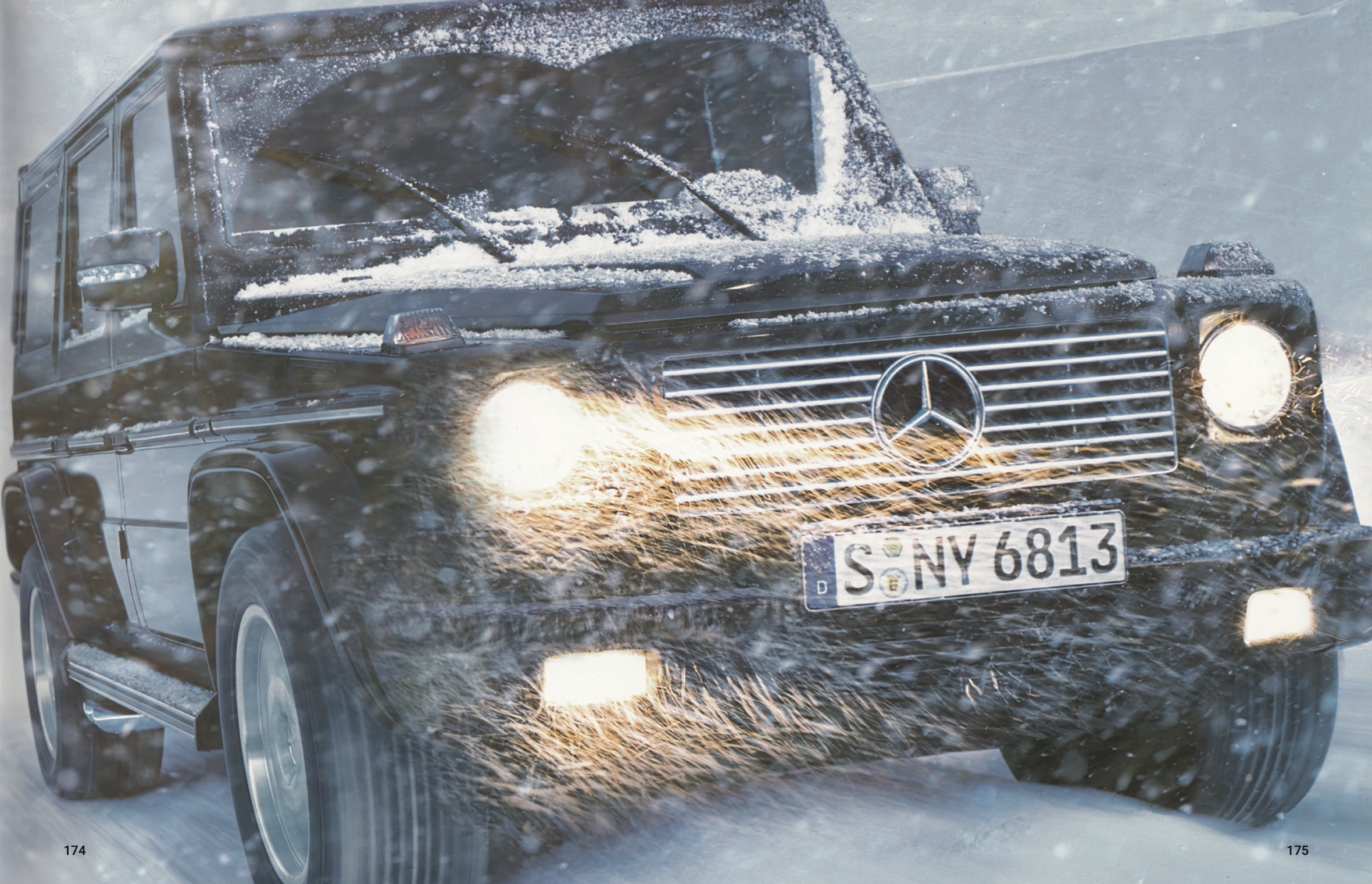
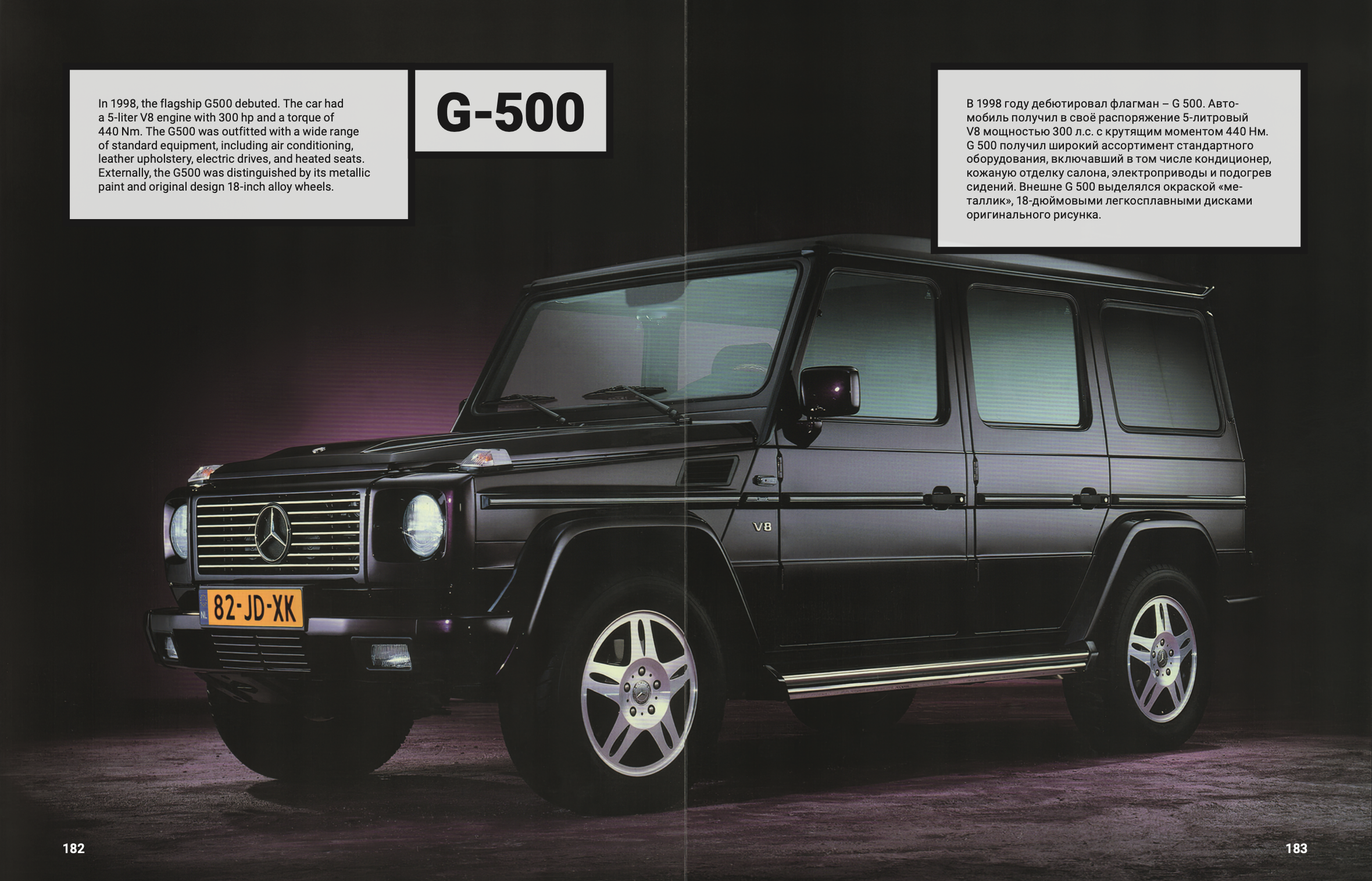
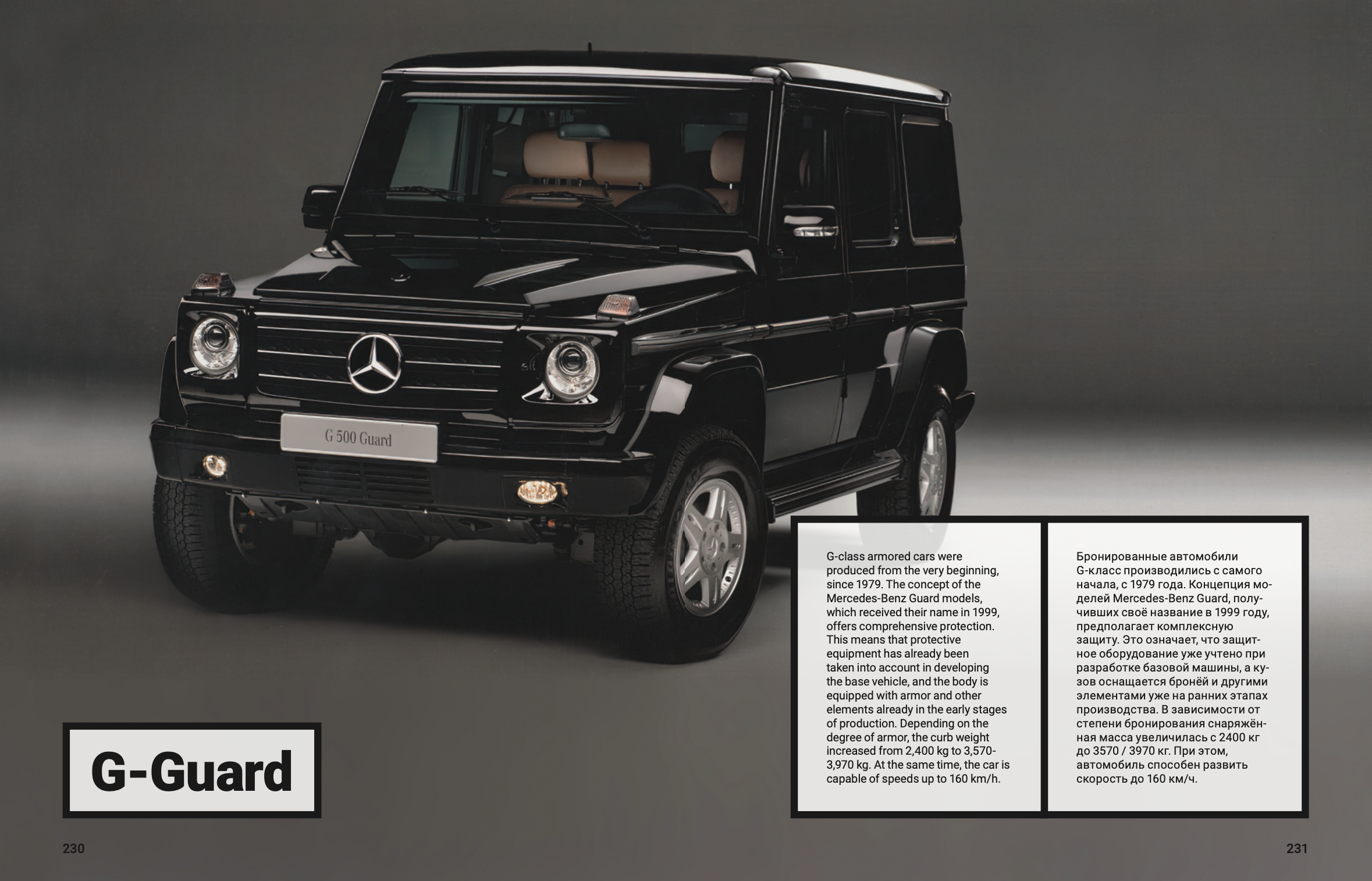

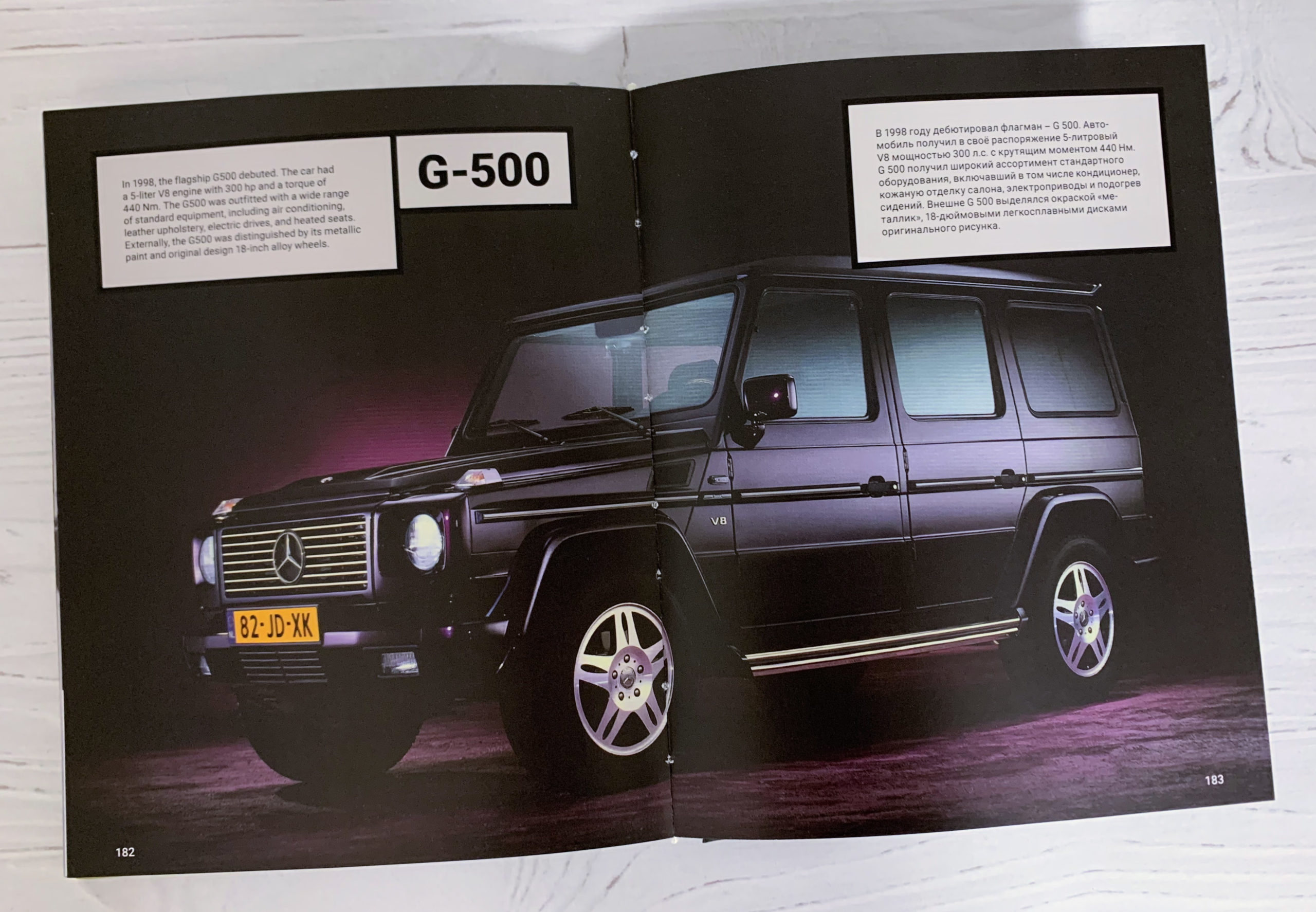


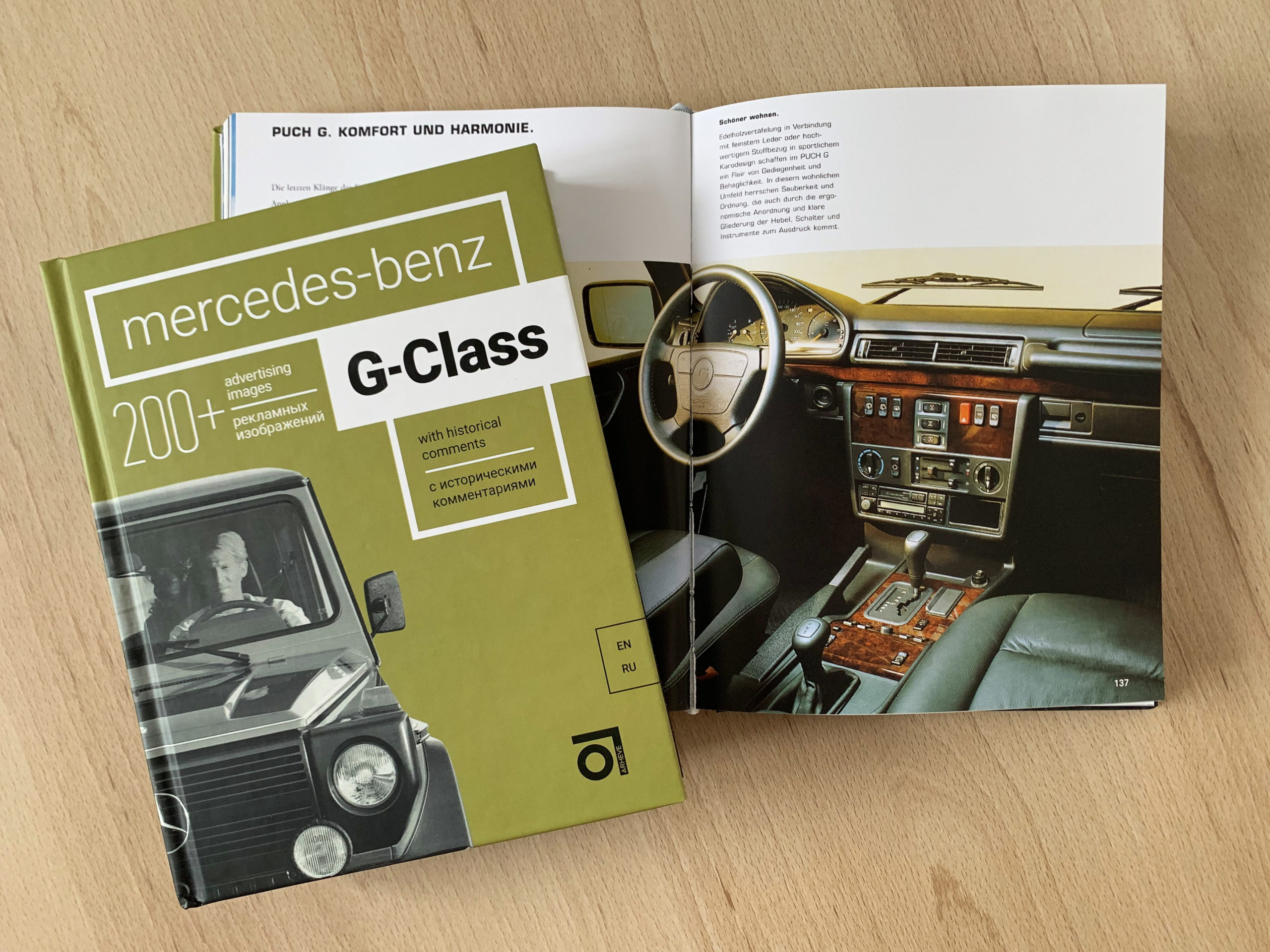
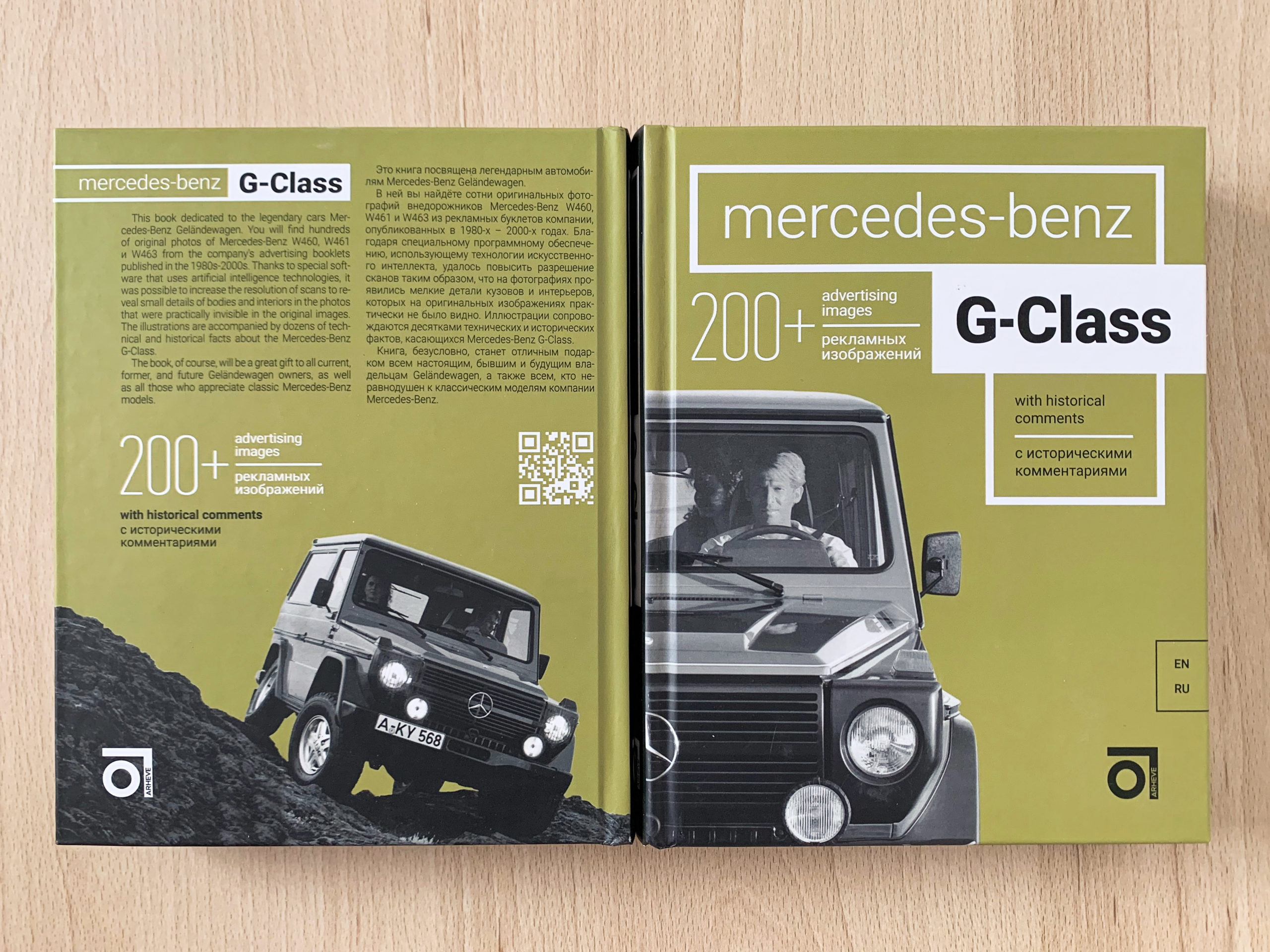

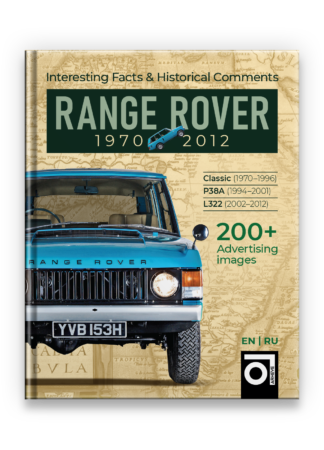

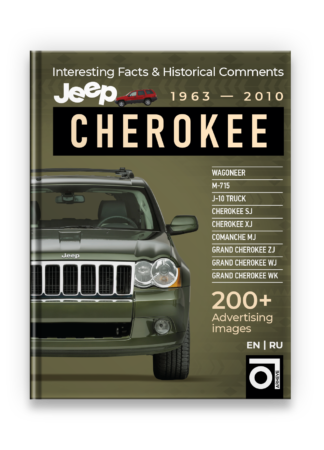

Reviews
There are no reviews yet.